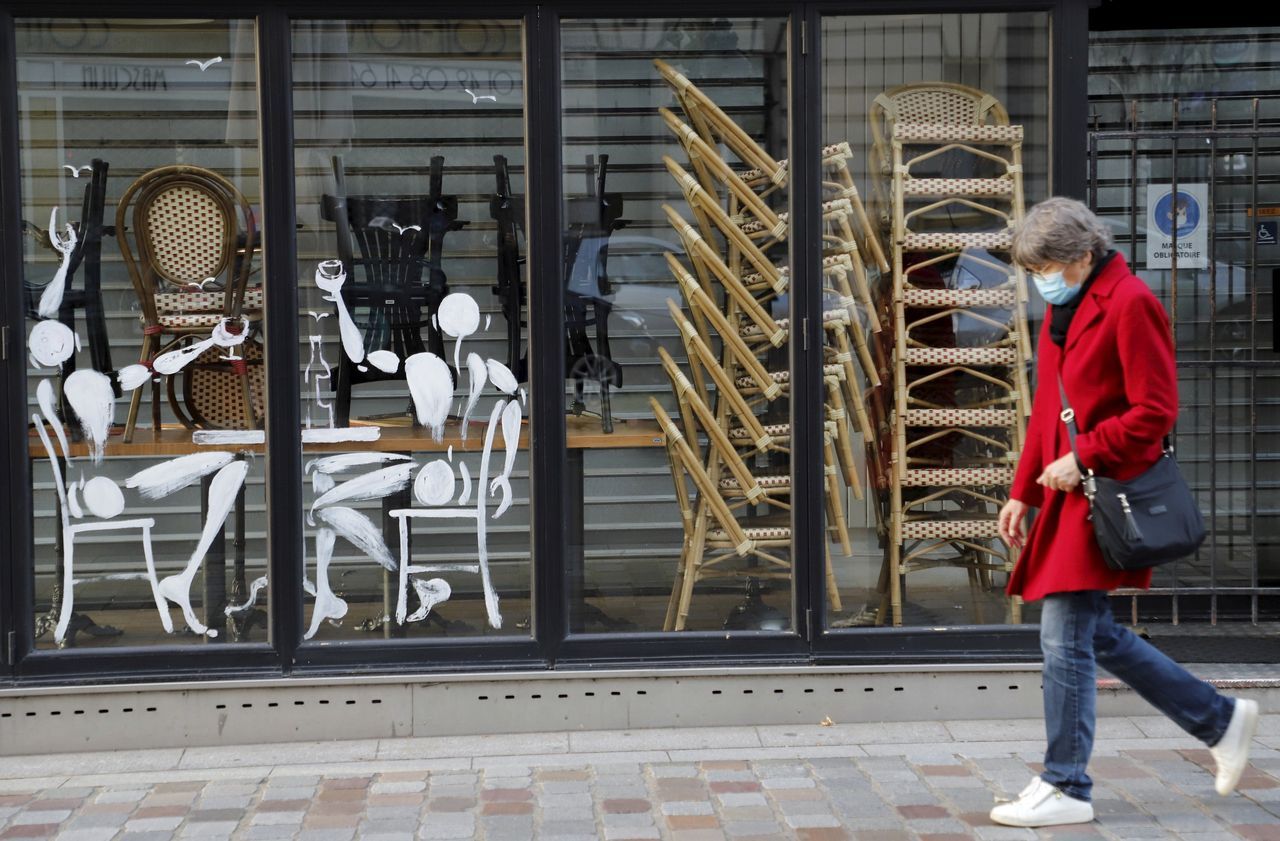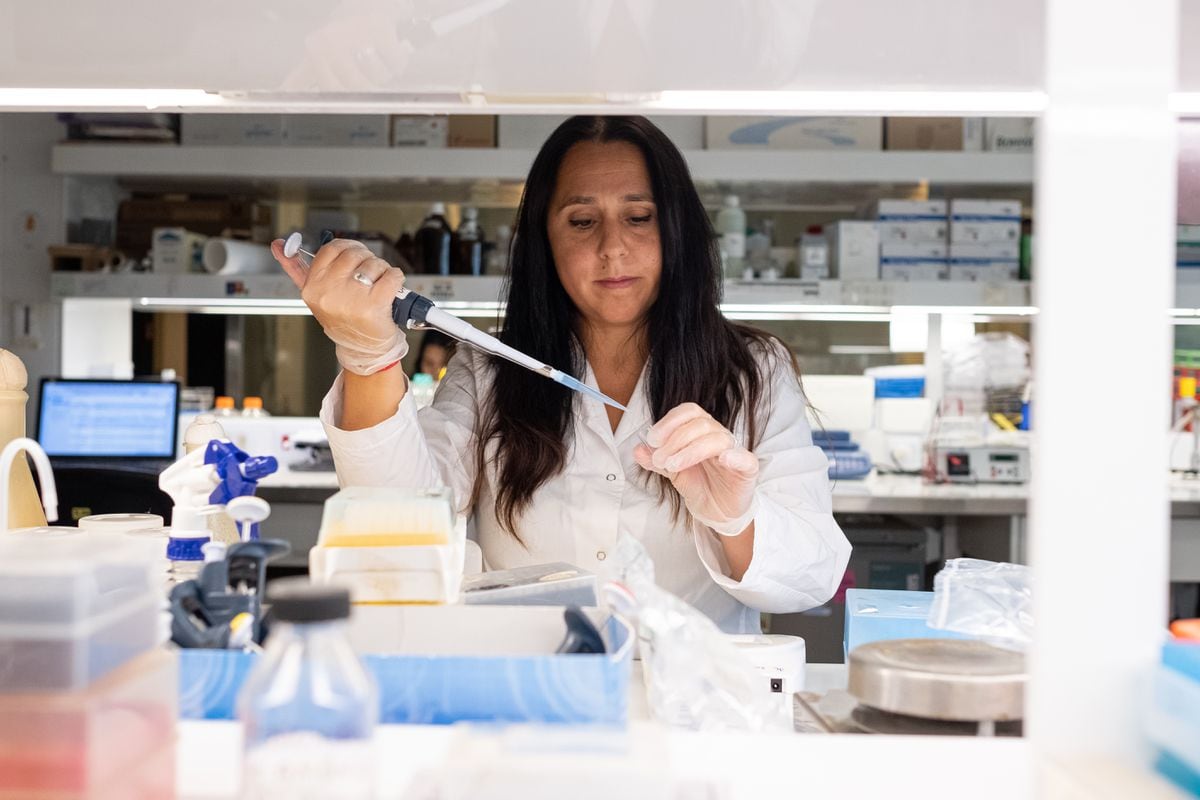"We absolutely need to make progress on this subject ..." sighs Michèle Legeas.
Almost a year after the first known cases of Covid-19 in China and eight months after the arrival of the virus in Europe, no one can yet say with certainty which are the most favorable places for contamination.
Shops, businesses, restaurants ... "It is all the more complicated to answer them as it is not so much this or that place that is inherently dangerous, but rather the way we behave in these places", decrypts the teacher at the School of Advanced Studies in Public Health (EHESP), specialist in the analysis of health risk situations.
Because of this vagueness, several doctors say they understand the discontent of small businesses, forced to lower the curtain until December 1 at the earliest.
"I really don't think there is a much higher risk of catching Covid-19 in a small store than in a supermarket," said epidemiologist Mahmoud Zureik.
"The government is right to take difficult measures, but their acceptability would be greater if they were based on unmistakable scientific data," said on Monday the head of the emergency department at the Georges Pompidou hospital, Philippe Juvin, on Europe 1.
Here are the top three reasons why health authorities, doctors and citizens are still - a bit - in the dark.
Because the clusters are not representative
It has been thought that the distribution of “clusters”, these centers of infection of at least two patients, could make it possible to establish a sort of ranking of the most risky contamination sites.
Every fortnight (every week until October), Public Health France counts them by classifying them by type of location: companies, nursing homes, schools and universities, etc.
Except that the clusters only represent a very small part of the contaminations.
According to the last weekly epidemiological point of Public Health France, published on November 12, 9,055 outbreaks were identified in total (3,698 are "under investigation", that is to say still active).
They concentrate 113,963 positive cases, or barely 6.3% of the total on the same date.
In other words, the vast majority of cases are not associated with a place.
VIDEO. United States: marriage was a cluster, 177 people infected with covid, 7 dead
“Faced with the current viral circulation, the number of clusters is underestimated.
The temporal evolution is no longer an indicator for monitoring the epidemic ”, now warns the health agency.
Because the studies are still fragmented
“But it involved 314 people, that's not serious!
“This October 24, sitting in front of Gabriel Attal during a debate which Le Parisien had attended, the restaurant owner Laurent Fréchet did not appreciate hearing that these establishments were places at risk of contamination.
Newsletter - Most of the news
Every morning, the news seen by Le Parisien
I'm registering
Your email address is collected by Le Parisien to enable you to receive our news and commercial offers.
Learn more
The government spokesperson had just mentioned the results of a study, published on September 1, 2020 by the Centers for Disease Control and Prevention in the United States.
In summary, positive people reported going to a restaurant 2.8 times more often than negative people.
For bars and cafes, the ratio rises to 3.9 times.
But the sample of this work was therefore small and not necessarily representative of the population, the authors themselves recognized.
READ ALSO>
Covid-19: how to explain the very sharp drop in new cases?
Another study, also in the United States but this time covering 98 million people in 10 large cities, attempted to go further.
The geolocation data were crossed with those of the epidemic on a very local scale, between March and May, which made it possible to "correlate the movements of people with contamination", decrypts Mahmoud Zureik.
Here too, restaurants appear to be the type of place most at risk (four times more than gyms, for example), according to the results published on November 10 in the journal Nature.
A study published by Nature is based on the geolocation data of 98 million individuals to determine the places where we contaminate the +.
Verdict?
Restaurants, bars and sports halls may have to remain closed for a long time ... https://t.co/IRuAuniea5 pic.twitter.com/S5DuxkXVsp
- fipaddict (@fipaddict) November 11, 2020
“Studies are piling up to point out a risk in restaurants.
This is not surprising since, by nature, the mask is removed, one sits there for a long time, etc. ”comments the Professor of Public Health and Epidemiology, agreeing with the opinion of many experts.
READ ALSO>
Spread of Covid-19: why restaurants and bars are places at risk
However, this study covers a period (from March to May) during which barrier gestures and the wearing of a mask were still little followed, and it was not carried out in France or even in Europe.
Hence a certain caution to be taken with these results.
"There is a set of factors to take into account: if the gauges have not been exceeded, if the barrier gestures have been respected by the staff, if the customers have been careful, etc.", points out Mahmoud Zureik himself. .
On the other hand, while a small business may not be more "dangerous" than a large supermarket in itself, it risks generating more movement in the streets for perhaps less essential purchases.
“Statistically, even if we observe that the positive cases went to a restaurant or to another place more than the others, this does not say anything about the way in which they behaved in the restaurant”, adds Michèle Legeas.
For this, a more detailed analysis would have to be carried out, case by case.
Because we don't do "retrospective" tracing
Several Asian countries got started very quickly.
And it seems to work, given that the scale of the contamination waves is much less than in Europe.
Retrospective tracing, used since last spring in particular in Japan, consists of finding out who a positive individual is in contact with… instead of focusing on finding contact cases of the individual in question.
READ ALSO>
Covid-19: “Japanese-style” tracing, the method that would allow us to know where we are infected
“This is a very effective method because it consists of primarily looking for places of super contamination, which are the 'drivers' of the epidemic.
We will be particularly interested in restaurants, sports halls or choir rooms, shops, etc. ”, explains epidemiologist Antoine Flahault, director of the Institute for Global Health in Geneva.
In other words, we logically favor closed places, often poorly ventilated and sometimes with a lot of crowds, that is to say the critical “cocktail”.
In France, it is the second option, that of "classic" tracing, which structures the "test, trace, isolate" strategy.
At present, the Health Insurance does not have the task of going upstream in the chain of transmission, undoubtedly in particular because of its limited means.
To compensate, the Pasteur Institute and Public Health France launched this fall a vast "study of the socio-demographic, behavioral and practical factors associated with a risk of infection by SARS-CoV-2", called ComCor.
The aim is to "understand how and in which situations people have been infected with Covid-19", reads an information note intended for voluntary patients, who may or may not have been infected.
All are interviewed by an online questionnaire, followed in some cases by a phone call.
No results have yet been published.








